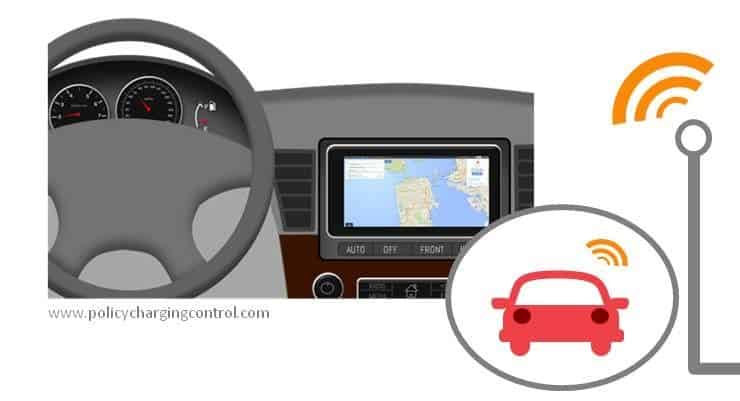In the last year, there were several launches of Mobile Operators’ Connected Car plans, where subscribers could add their cars to their existing shared plans or purchase a separate connectivity for the car for an access fee and corresponding data charges. These plans were made available through partnerships between auto-makers and mobile operators and marked the first time when drivers can subscribe to wireless connectivity for their cars. Earlier collaboration on wireless connectivity in the car between these two parties were confined to pre-configured cloud-based services which were mostly centred on telematics, safety and security services and were available as a complimentary service from the auto-maker, especially for the higher-end luxury auto brands. These partnerships saw the mass deployment of SIMs which were embedded within the car’s hardware, and which were powered by M2M connectivity that many drivers were not even aware off, except for knowing that their cars were somehow connected to a ‘system’ that brings the latest in traffic updates, vehicle diagnostics and that offers certain services such as concierge and emergency assistance.
 In these last 12 months though, the vision of the Connected Car has transformed significantly from a system that provided navigation and vehicle diagnostics (and maybe some music) to a fully fledged in-vehicle service that connects to the entire breadth of online content, including popular mobile applications and a wide range of services, which now boast richer information, which are more interactive, real-time and customized tp the preferences of the driver. More importantly, the idea of the connected car started evolving more and more towards the ‘smart-phone-on-wheels’ concept with users envisaging the service as one that allows them to download and run applications from app stores, stream rich content such as videos and audio, browse the web and use data to make voice calls or message their family and friends, all by using the touch screen on their digital display unit (the head unit) and the strategically located knobs and buttons accessible by the driver.
In these last 12 months though, the vision of the Connected Car has transformed significantly from a system that provided navigation and vehicle diagnostics (and maybe some music) to a fully fledged in-vehicle service that connects to the entire breadth of online content, including popular mobile applications and a wide range of services, which now boast richer information, which are more interactive, real-time and customized tp the preferences of the driver. More importantly, the idea of the connected car started evolving more and more towards the ‘smart-phone-on-wheels’ concept with users envisaging the service as one that allows them to download and run applications from app stores, stream rich content such as videos and audio, browse the web and use data to make voice calls or message their family and friends, all by using the touch screen on their digital display unit (the head unit) and the strategically located knobs and buttons accessible by the driver.
This very idea of the connected car being a ‘smart-phone-on-wheels’ has triggered a strong interest in the retail segment, with car buyers now starting to take note of the in-vehicle connectivity and the data offers that may be available to them when they purchase their cars. Many players in the Connected Car market expect this demand to fuel the growth of a lucrative new segment – the infotainment segment – which combines a wide variety of third party and vehicle related (telematics) information services with entertainment services to provide ‘connectivity plus content’ packages for drivers.
Following up on the ongoing initiatives in this area, Tara Neal of PCC Mobile Broadband spoke to Scott Frank, VP of Marketing at Airbiquity, a global leader in the telematics and in-vehicle infotainment content, about the evolution of the Connected Car market and how content players like itself are collaborating with MNOs and auto-makers to tap the growing demand for Connected Car services.
Scott Frank,
VP of Marketing,
Airbiquity

According to Scott, today’s connected car market is still at its early growth phase. The embedded technology where SIMs are mass deployed is now being combined, on a hybrid model, with tethering (or projection) technology to enable connected cars to leverage dual connectivity – one from the embedded SIM and the other, from the drivers’ smartphone connection. Scott said that the hybrid model caters for both ends of the need for data connectivity in the vehicle – the first one being the reliable and consistent connection for safety, security and navigation purposes (for example, automatic crash notifications) and the second one, to cater for the need to access richer applications such as Facebook or Twitter or video streaming, which are bandwidth intensive and whose performance will be limited if these applications were to rely solely on the vehicle head unit's processing capabilities.

Scott pointed out that while there is a strong competition among various options (read more:To Embed, to Tether or to Integrate - the Dilemma of the $141 Billion Connected Car Market) for in-vehicle connectivity, the vision of the Connected Car is ultimately headed towards the ‘Intelligent Vehicle’, where connectivity will go beyond bringing information and entertainment content to the car’s digital screen to delivering services that take into consideration the environment, the drivers’ preferences and profile, the geographic attributes and other contextual information, and thus addressing the drivers' informational and service needs while the driver is on the road. Scott shared an example of how all these information can be used, for example, to provide the driver a recommendation on an alternative way home where information relating to traffic and fuel conditions as well as other environmental attributes are merged with the driver’s specific preferences, including his/her favourite gas stations (for example, to benefit from loyalty points offered at certain gas stations) to provide the driver the fastest and most optimized journey home.
The Intelligent Vehicle thus transforms the existing value proposition of a Connected Car. From providing access to cloud-based applications that can stream music or provide navigation help or connect to friends and family, the Intelligent Vehicle of the future will be delivering in-vehicle services that are all about maximising the drivers’ driving experience and helping him/her make the most out of the journey. This distinction will set the digital screen in the connected car apart from a smart phone, a tablet or a laptop, and will be instrumental in pushing the Connected Car market in future.
The ability to fulfil the unique value proposition of the Intelligent Vehicle, said Scott, depends on a number of key factors, namely the availability of big data, cloud-based content and analytical capabilities. Intelligence that is provided to the driver hinges on the ability of cloud-based applications to connect to large sets of information collected in real-time from a large number of internal and external sources. This is topped with the analytics layer that filters, extracts and processes all these information and matches the various inputs (for example, the driver profile matched against the special offers at a gas station) to provide the driver most timely and contextual information that meets his informational needs. Big data, cloud infrastructure and analytics have become the key enablers for a large number of content providers who collect information such as traffic conditions, parking availability, fuel stops, emergency stops, ATM locations and rest place information not only in a locality but across the globe and who provide these information on easily accessible, driver-friendly applications that can be downloaded on any compatible in-vehicle display units.
 And this is where platforms such as those provided by Airbiquity come into play. Airbiquity’s cloud-based Choreo Platform connects a wide range of content provided by third parties, for example, the likes of Parkopedia, Yelp, EuroSport, Slacker Radio, Stitcher and Inrix, while at the same time, connecting to the vehicle’s diagnostics and driver information to provide the driver access to vehicle diagnostics, navigation assistance, infotainment content and also fleet management services. The Choreo platform sees Airbiquity working directly with auto-makers, or collaborating with MNOs or head unit manufacturers to bring these content and services onto the auto-makers own connected car platforms, such as those provided by Nissan - NissanConnect, Ford - Ford Sync and Renault – Renault R-Link. One of the biggest advantages provided by platforms such as Choreo is its integration into the vehicle’s native systems – allowing it to enforce smart policies on the use of the content services in vehicles. Compared to independently installed applications, applications provided on the Choreo platform provide policy management capabilities, added Scott, that can automatically change the display or change the functionalities on an application using inputs from the vehicle’s systems, an example of which is the auto trigger of the ‘no keyboard’ function when the vehicle starts to speed above a certain limit.
And this is where platforms such as those provided by Airbiquity come into play. Airbiquity’s cloud-based Choreo Platform connects a wide range of content provided by third parties, for example, the likes of Parkopedia, Yelp, EuroSport, Slacker Radio, Stitcher and Inrix, while at the same time, connecting to the vehicle’s diagnostics and driver information to provide the driver access to vehicle diagnostics, navigation assistance, infotainment content and also fleet management services. The Choreo platform sees Airbiquity working directly with auto-makers, or collaborating with MNOs or head unit manufacturers to bring these content and services onto the auto-makers own connected car platforms, such as those provided by Nissan - NissanConnect, Ford - Ford Sync and Renault – Renault R-Link. One of the biggest advantages provided by platforms such as Choreo is its integration into the vehicle’s native systems – allowing it to enforce smart policies on the use of the content services in vehicles. Compared to independently installed applications, applications provided on the Choreo platform provide policy management capabilities, added Scott, that can automatically change the display or change the functionalities on an application using inputs from the vehicle’s systems, an example of which is the auto trigger of the ‘no keyboard’ function when the vehicle starts to speed above a certain limit.
 As a B2B platform, solutions such as Choreo present auto-makers as well as MNOs various monetization opportunities. While the monetization of these services from the retail end is still in its infancy with auto-makers providing in-vehicle connectivity and content as a complimentary service for the first 3 to 5 years of purchasing the vehicle, the advent of richer mobile infotainment content such as streaming video and personalized concierge services is expected to see the rise of subscription based Connected Car services in near future, added Scott.
As a B2B platform, solutions such as Choreo present auto-makers as well as MNOs various monetization opportunities. While the monetization of these services from the retail end is still in its infancy with auto-makers providing in-vehicle connectivity and content as a complimentary service for the first 3 to 5 years of purchasing the vehicle, the advent of richer mobile infotainment content such as streaming video and personalized concierge services is expected to see the rise of subscription based Connected Car services in near future, added Scott.
 Future scenarios may include bigger collaborations between players such as Airbiquity and auto-makers where these players enrich the auto-makers proprietary Connected Car platforms with richer content, beefing up the auto-makers’ after sales market. Closer partnerships are also expected in the telecom space, where these players will be helping mobile operators enhance MNOs’ own Connected Car platforms (examples include AT&T’s AT&T Drive and Sprint’s Velocix) with richer content choices, expanding on MNOs’ digital content and multi-screen content offers. Airbiquity, for example, can go beyond this to help MNOs track the utilization of the various applications and overall bandwidth consumption, and with the incorporation of policy rules, helps MNOs roll out highly customized Connected Car content packages for end-users. For application developers, incorporation of their content on aggregator platforms such as Airbiquity’s Choreo presents the fastest way to be onboarded onto auto-makers’ and MNOs’ connected car services, expanding their brand presence, market reach and user base.
Future scenarios may include bigger collaborations between players such as Airbiquity and auto-makers where these players enrich the auto-makers proprietary Connected Car platforms with richer content, beefing up the auto-makers’ after sales market. Closer partnerships are also expected in the telecom space, where these players will be helping mobile operators enhance MNOs’ own Connected Car platforms (examples include AT&T’s AT&T Drive and Sprint’s Velocix) with richer content choices, expanding on MNOs’ digital content and multi-screen content offers. Airbiquity, for example, can go beyond this to help MNOs track the utilization of the various applications and overall bandwidth consumption, and with the incorporation of policy rules, helps MNOs roll out highly customized Connected Car content packages for end-users. For application developers, incorporation of their content on aggregator platforms such as Airbiquity’s Choreo presents the fastest way to be onboarded onto auto-makers’ and MNOs’ connected car services, expanding their brand presence, market reach and user base.
With the usage of bandwidth intensive applications continuing to increase across connected devices such as smartphones and tablets, and the advent of the Intelligent Vehicle and demand from future drivers for increased intelligence in their vehicles, the Connected Car is expected to leverage big data, cloud and analytics in ways bigger than ever to bring contextual services that will see the Connected Car transforming into a fully fledged service vertical of its own with its own ecosystem within the mobile broadband and automotive space. At the same time, it is expected to create major monetization avenues – via sale of bandwidth, content (both information and entertainment) as well as via other value added services such as mobile advertisements, location-based and concierge services, attracting and growing more players in this space.
Read more on Connected Cars:
Beyond Connectivity: Expanding Operators' Content Business to Half a Billion Connected Cars by 2020
Android M Marks Google's Direct Entry to the Connected Car Market




















